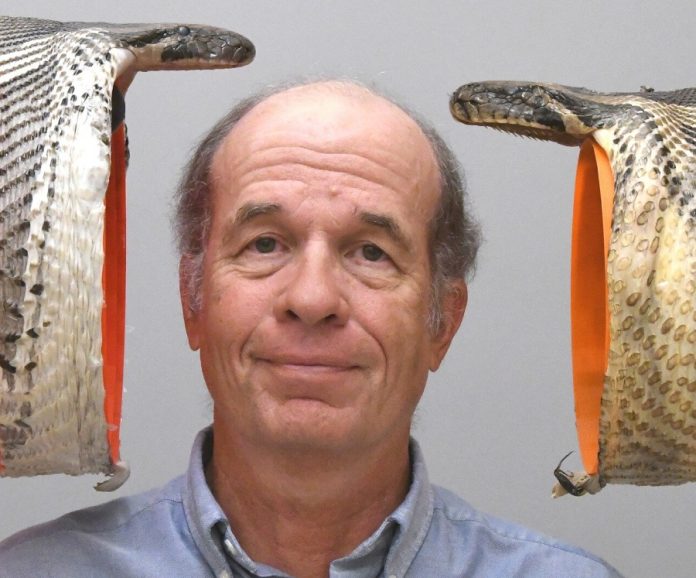
A recent study published in Reptiles & Amphibians reveals that Burmese pythons can eat much larger prey than scientists previously thought.
This discovery has raised concerns about the impact these invasive snakes have on the wildlife of southern Florida.
Burmese pythons, originally from Southeast Asia, were introduced to Florida through the pet trade when some escaped or were released.
These snakes can grow to enormous sizes, and researchers found that their mouths are even more flexible than expected, allowing them to eat larger animals. The ability of a python to eat big prey depends on how wide it can open its mouth, known as its “gape.”
Professor Bruce Jayne from the University of Cincinnati led the study, which measured the gape of some of the largest pythons ever captured.
His team found that the biggest pythons could stretch their mouths up to 26 centimeters (10.2 inches) in diameter, which is 18% larger than previously recorded. This extra stretch increases the total size of their mouth opening by 40%, allowing them to swallow even larger animals.
For example, one captured python managed to swallow a 77-pound deer—about two-thirds of its own weight! Researchers like Jayne are concerned because the ability to consume such large prey means more native animals in Florida are at risk.
Invasive Burmese pythons have already been responsible for wiping out populations of foxes, bobcats, and raccoons in certain areas.
The study also highlights that only a small number of these snakes reach such massive sizes. Out of more than 9,000 pythons captured in Florida, less than 1% have grown longer than 16 feet. However, scientists believe there are still even larger pythons out there. It’s possible that some could reach a gape size of 30 centimeters, large enough to eat a 120-pound deer.
The study is part of ongoing research by the Conservancy of Southwest Florida, which began efforts to track and remove Burmese pythons in 2013. Researchers have tagged and followed 120 pythons to study their behavior and habitats. This information is crucial for developing better strategies to control these snakes.
So far, the team has removed 770 large pythons, each big enough to eat prey the size of a baby deer. If every one of these snakes were to eat just one deer, that would add up to 13,000 pounds of prey lost. As these snakes continue to spread in Florida, scientists worry they could cause even greater damage to native wildlife across the state and potentially in other parts of the Southeast.
“This is just the beginning of understanding the impact on Florida’s wildlife,” Jayne said. “We’re still trying to figure out how far and wide these snakes will spread.”
Researchers hope that by better understanding the python’s eating habits and range, they can protect native species and minimize the damage caused by this invasive predator.



